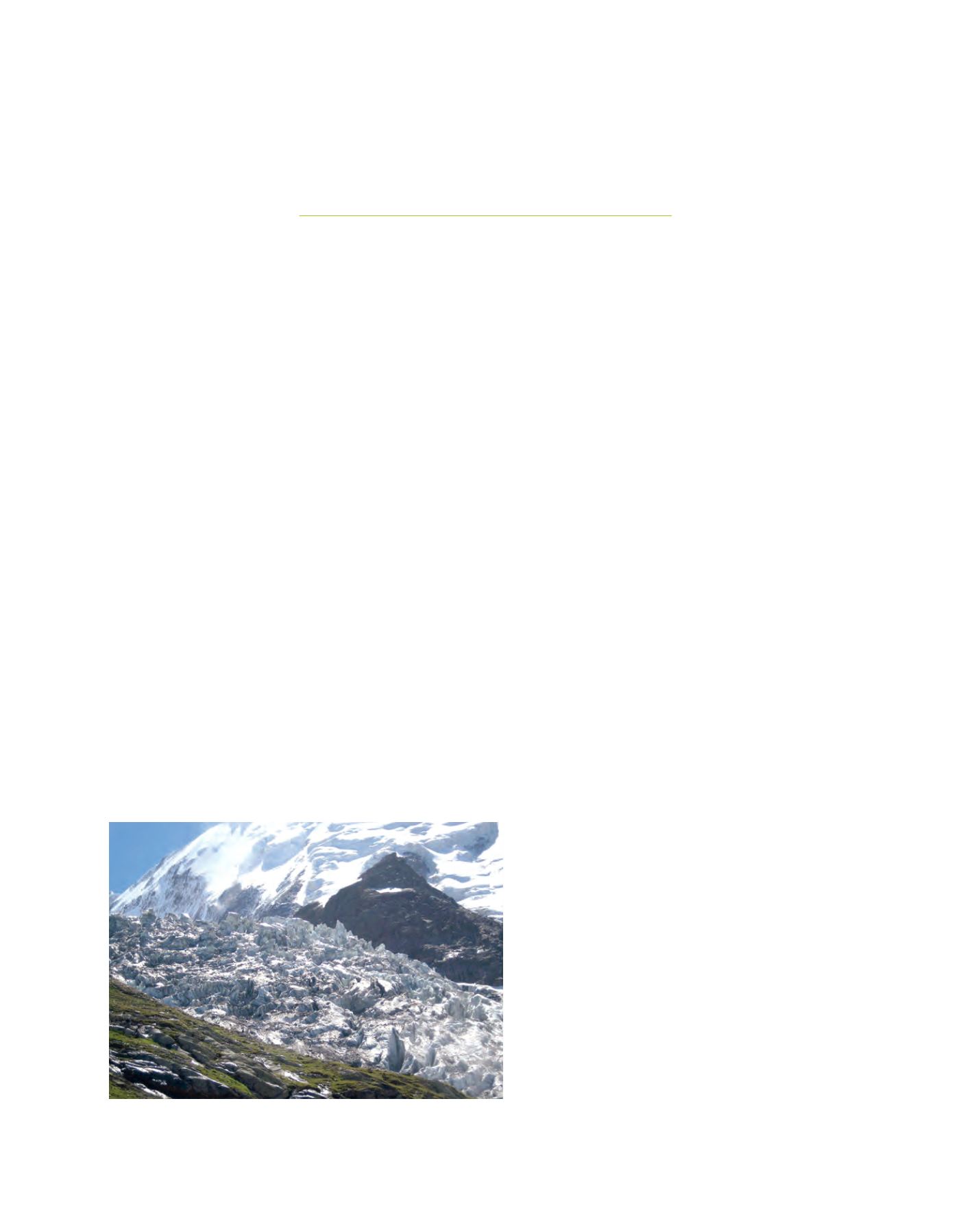

[
] 212
Preparing for climate change by
reducing disaster risks
Reid Basher, Special Advisor to UN Assistant Secretary-General for Disaster Risk Reduction,
International Strategy for Disaster Reduction Secretariat
I
t is now well accepted that climate change will lead to greater
extremes in weather conditions such as heat waves, intense rain-
falls and severe droughts, and that – all other things being equal
– disaster occurrence will increase as a result. Indeed, there are
growing signs from disaster databases, as well as from field reports
of development and humanitarian organizations, that this trend is
already underway.
However, ‘all other things’ are not in fact equal. Firstly, disasters owe
as much, if not more, to the socioeconomic factors that expose us
and make us vulnerable to the weather and other natural hazards.
Denuded hillsides, settlements on flood plains, poor housing, inad-
equate preparedness and early warning – factors such as these are
what exacerbate the risks we face and lead to more disasters each
year. Secondly, and conversely, there is currently an upsurge in aware-
ness of, and commitment to, reducing disaster risks and preparing
for climate change, which if successful will reduce countries’ expo-
sure and vulnerabilities, as well as lower the impacts of more extreme
weather in the future.
We should not, therefore, focus exclusively on the hazard component
of the problem and on the extremes. Instead, we should use the opportu-
nity to grapple seriously with the interconnected issues involved, and to
achieve a triple win, as advocated by UN Secretary-General Ban Ki-moon,
of adapting to climate change, reducing disaster risks and losses, and
strengthening development outcomes and poverty reduction.
1
Characteristics of disaster risk
Disasters span a wide range of phenomena, from short-
term events such as tornados, earthquakes, tsunami, heat
waves, tropical storms and floods, to longer-term and
episodic conditions of drought and wild land fire. From
1991 to 2005, 3,470 million people were affected by disas-
ters, 960,000 people died, and economic losses stood at
USD1,193 billion.
2
Averaged over the last two decades
(1988 to 2007), 76 per cent of all disaster events were
hydrological, meteorological or climatological in nature;
these accounted for 45 per cent of deaths and 79 per cent of
economic losses caused by natural hazards.
Levels of disaster risk vary widely around the world
and across different communities. Poor countries and
communities are most affected, owing to intrinsic vulner-
abilities to hazards and comparatively low capacities for
risk reduction measures. For example, while Japan and
the Philippines have roughly equivalent population expo-
sure to tropical cyclones, death rates in the Philippines
are 17 times greater than in Japan. Bangladesh, China and
India, each heavily populated, account for 75 per cent of
the global mortality risk from floods. Small countries are
also particularly vulnerable –Grenada’s losses of USD919
million as a result of Hurricane Ivan in 2004 were equal to
2.5 times its gross domestic product.
In launching the Global Assessment Report on Disaster
Risk Reduction,
3
UN Secretary-General Ban Ki-moon said
that disaster risk is rising in an alarming way, threatening
development gains, economic stability and global security
while creating disproportionate impacts on developing
countries and poor rural and urban areas. The report draws
attention to the growth of repeated disasters for some
communities – especially across low- and middle-income
countries –which is having a debilitating cumulative effect
on livelihoods and assets. In one multi-country study, the
damage to housing frompersistent, low intensity events has
quintupled since 1980.
Action to reduce disaster risks
As a result of growing concern about disaster risks, 168
governments met in Kobe in January 2005 and adopted
the ‘Hyogo Framework for Action 2005-2015: Building the
Resilience of Nations and Communities to Disasters’, as a
roadmap for achieving a substantial reduction of disaster
losses by 2015.
4
R
isk
G
overnance
and
M
anagement
Research and monitoring has shown major shrinkages of glaciers and resulting
changes in the seasonal river flows, a new challenge for downstream communities
Image: Reid Basher
















